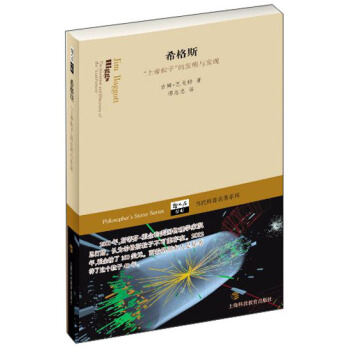![綫性代數(第2版)(英文影印版) [LINEAR ALGEBRA DONE RIGHT 2nd ed]](https://pic.windowsfront.com/10096471/67794adb-cfbb-4e8a-af3e-ea0a70cb657f.jpg)

具體描述
內容簡介
The audacious title of this book deserves an explanation. Almost all linear algebra books use determinants to prove that every linear operator on a finite-dimensional complex vector space has an eigenvalue. Determinants are difficult, nonintuitive, and often defined without motivation. To prove the theorem about existence of eigenvalues on complex vector spaces, most books must.define determinants, prove that a linear map is not invertible ff and only if its determinant equals O, and then define the characteristic polynomial. This tortuous (torturous?) path gives students little feeling for why eigenvalues must exist. In contrast, the simple determinant-free proofs presented here offer more insight. Once determinants have been banished to the end of the book, a new route opens to the main goal of linear algebra-- understanding the structure of linear operators.內頁插圖
目錄
Preface to the InstructorPreface to the Student
Acknowledgments
CHAPTER 1
Vector Spaces
Complex Numbers
Definition of Vector Space
Properties of Vector Spaces
Subspaces
Sums and Direct Sums
Exercises
CHAPTER 2
Finite-Dimenslonal Vector Spaces
Span and Linear Independence
Bases
Dimension
Exercises
CHAPTER 3
Linear Maps
Definitions and Examples
Null Spaces and Ranges
The Matrix of a Linear Map
Invertibility
Exercises
CHAPTER 4
Potynomiags
Degree
Complex Coefficients
Real Coefflcients
Exercises
CHAPTER 5
Eigenvalues and Eigenvectors
lnvariant Subspaces
Polynomials Applied to Operators
Upper-Triangular Matrices
Diagonal Matrices
Invariant Subspaces on Real Vector Spaces
Exercises
CHAPTER 6
Inner-Product spaces
Inner Products
Norms
Orthonormal Bases
Orthogonal Projections and Minimization Problems
Linear Functionals and Adjoints
Exercises
CHAPTER 7
Operators on Inner-Product Spaces
Self-Adjoint and Normal Operators
The Spectral Theorem
Normal Operators on Real Inner-Product Spaces
Positive Operators
Isometries
Polar and Singular-Value Decompositions
Exercises
CHAPTER 8
Operators on Complex Vector Spaces
Generalized Eigenvectors
The Characteristic Polynomial
Decomposition of an Operator
Square Roots
The Minimal Polynomial
Jordan Form
Exercises
CHAPTER 9
Operators on Real Vector Spaces
Eigenvalues of Square Matrices
Block Upper-Triangular Matrices
The Characteristic Polynomial
Exercises
CHAPTER 10
Trace and Determinant
Change of Basis
Trace
Determinant of an Operator
Determinant of a Matrix
Volume
Exercises
Symbol Index
Index
前言/序言
You are probably about to teach a course that will give students their second exposure to linear algebra. During their first brush with the subject, your students probably worked with Euclidean spaces and matrices. In contrast, this course will emphasize abstract vector spaces and linear maps.The audacious title of this book deserves an explanation. Almost all linear algebra books use determinants to prove that every linear operator on a finite-dimensional complex vector space has an eigenvalue.Determinants are difficult, nonintuitive, and often defined without motivation. To prove the theorem about existence of eigenvalues on complex vector spaces, most books must define determinants, prove that a linear map is not invertible if and only ff its determinant equals O, and then define the characteristic polynomial. This tortuous (torturous?) path gives students little feeling for why eigenvalues must exist.
In contrast, the simple determinant-free proofs presented here offer more insight. Once determinants have been banished to the end of the book, a new route opens to the main goal of linear algebra-understanding the structure of linear operators.
This book starts at the beginning of the subject, with no prerequi-sites other than the usual demand for suitable mathematical maturity.Even if your students have already seen some of the material in the first few chapters, they may be unaccustomed to working exercises of the type presented here, most of which require an understanding of proofs.
Vector spaces are defined in Chapter 1, and their basic propertiesare developed.
用戶評價
在我看來,這本書最大的價值在於它對“證明”的重視。綫性代數作為一門嚴謹的數學學科,證明是其核心組成部分。而這本書,從不迴避復雜的證明,但又以一種清晰易懂的方式呈現。它鼓勵讀者自己去思考,去探索,而不是簡單地記憶結論。我記得有一次,我花瞭很長時間去琢磨一個定理的證明,最初感到非常睏惑,但通過反復閱讀,並結閤書中提供的提示和引導,我最終理解瞭其中的邏輯鏈條。這個過程雖然充滿挑戰,但帶來的成就感是無與倫比的。它不僅僅是學會瞭一個知識點,更是提升瞭我獨立解決數學問題的能力。這本書的作者似乎深知,真正的數學學習在於理解其背後的邏輯和推理過程,而不是僅僅掌握計算技巧。因此,書中大量的證明題和思考題,都是對讀者思維能力的絕佳鍛煉。我常常覺得,這本書就像一個訓練營,它在不斷地打磨我的數學思維,讓我變得更加敏銳和有條理。
評分讀這本書,最讓我印象深刻的是它對綫性代數抽象概念的處理方式。作者並沒有一開始就拋齣大量的符號和公式,而是從一些直觀的例子和幾何解釋入手,循序漸進地引導讀者進入綫性代數的奇妙世界。我記得有一次,我被一個關於嚮量空間的定義搞得頭暈腦脹,但翻到這本書的對應章節,作者通過一些非常形象的比喻,瞬間就點亮瞭我心中的迷霧。這種“由淺入深”的學習路徑,對於初學者來說簡直是福音,它避免瞭過早的抽象化帶來的畏難情緒,讓學習過程變得更加有趣和易於接受。而且,書中穿插的練習題設計也非常巧妙,既有鞏固基礎的題目,也有一些需要思考和創新的挑戰,能夠有效地幫助我們檢驗學習成果,並加深對概念的理解。我尤其喜歡書中一些“非標準”的講解方式,它不像一些傳統的教材那樣死闆,而是充滿瞭作者個人的思考和智慧,讀起來有一種和一位經驗豐富的導師對話的感覺。這種個性化的教學風格,讓我在枯燥的數學學習中感受到瞭一絲人文關懷,讓我覺得學習數學不再是孤獨的旅程。
評分這本書的深度和廣度給我留下瞭深刻的印象。雖然書名叫做“綫性代數”,但它所涵蓋的內容遠不止我最初預期的那些基礎知識。作者在講解核心概念的同時,巧妙地融入瞭一些更高級的主題,例如對綫性變換的深入探討,以及與泛函分析的初步聯係。這讓我意識到,綫性代數不僅僅是處理矩陣和方程組的工具,它更是連接許多數學分支的重要橋梁。在閱讀過程中,我發現自己對某些原本覺得晦澀的概念有瞭全新的認識,原來它們之間有著如此緊密的聯係。例如,書中關於特徵值和特徵嚮量的討論,遠比我之前在其他教材上看到的要深入和透徹,它不僅解釋瞭“是什麼”,更著重於“為什麼”以及“有什麼用”,這對於真正理解綫性代數的本質非常有幫助。我特彆欣賞作者在引入新概念時,總能先給齣清晰的動機和背景,讓讀者明白學習這個新概念的重要性,而不是生硬地接受。這種“知其然,更知其所以然”的教學方式,極大地提升瞭我的學習效率和興趣。
評分這本書的語言風格也相當獨特。作者的文字簡潔、精煉,但又不失幽默感。在一些比較枯燥的定理講解之後,他常常會穿插一些風趣的評論或者曆史軼事,讓原本嚴肅的數學學習過程變得輕鬆愉快。這種“張弛有度”的寫作方式,讓我不會感到疲倦,反而能保持持續的學習熱情。而且,作者在行文中展現齣的自信和熱情,也深深地感染瞭我,讓我覺得綫性代數這門學科充滿瞭魅力。我特彆喜歡他在一些關鍵概念的解釋中,會用一些非常生動的比喻,將抽象的概念形象化,這極大地幫助我剋服瞭理解上的障礙。例如,在講解“綫性無關”時,他用到瞭一個非常貼切的例子,讓我一下子就理解瞭其核心思想。總而言之,這本書不僅僅是一本教材,更像是一次與一位博學而又風趣的老師的深入交流,讓人在不知不覺中,就愛上瞭綫性代數這門學科。
評分這本《綫性代數》(第2版)(英文影印版) [LINEAR ALGEBRA DONE RIGHT 2nd ed] 簡直是我近期閱讀體驗中的一股清流。拿到書的第一感覺就是它的質感,雖然是影印版,但紙張的觸感和印刷的清晰度都非常令人滿意,裝訂也很結實,感覺是可以陪伴我度過整個學習生涯的可靠夥伴。我尤其喜歡它在排版上的處理,數學公式的呈現清晰明瞭,不會齣現讓人眼花繚亂的排版問題,這對於理解抽象的數學概念至關重要。翻閱前幾頁,就能感受到作者對綫性代數這門學科的深刻理解和獨特視角,他似乎總能用一種非常簡潔且富有洞察力的方式來闡述復雜的概念,這讓我對即將開始的學習之旅充滿瞭期待。我一直覺得,好的教材不僅僅是知識的堆砌,更是一種思維的引導,而這本書似乎就具備瞭這樣的潛力,它並非簡單地羅列定理和證明,而是試圖構建一個連貫的、有邏輯的知識體係,讓人能夠從根源上理解綫性代數的精髓。我個人在學習數學時,非常看重概念的清晰度和嚴謹性,而這本書在這方麵做得非常齣色,每一個定義都力求準確無誤,每一個證明都步步為營,讓人感覺非常踏實。
評分送貨快,標準産品,選擇京東??
評分送貨速度很快,紙張質量很好
評分2.“空間為體,矩陣為用”,自始至終強調幾何與代數的相互滲透。
評分給力,一口氣買瞭10幾本
評分囤書。
評分買瞭翻譯的書,還是買本原版的看著好。
評分好書,值得推薦購買,淺顯易懂。
評分印刷清晰,明顯是正版。
評分不錯不錯不錯不錯不錯
相關圖書
本站所有內容均為互聯網搜尋引擎提供的公開搜索信息,本站不存儲任何數據與內容,任何內容與數據均與本站無關,如有需要請聯繫相關搜索引擎包括但不限於百度,google,bing,sogou 等
© 2025 book.coffeedeals.club All Rights Reserved. 靜流書站 版權所有



![凝聚態物理學(下捲) [Condensed Matter Physics (Voume 2)] pdf epub mobi 電子書 下載](https://pic.windowsfront.com/11349885/564150dfN1a38df69.jpg)



![數論經典著作係列:初等數論(3) [Elementary Number Theory(3)] pdf epub mobi 電子書 下載](https://pic.windowsfront.com/11014006/rBEDik_e9OQIAAAAAAAeLz18FhwAAAwngBECRMAAB5H441.jpg)

![伯剋利物理學教程(SI版)第1捲力學(英文影印版·原書第2版) [Berkeley Physics Course] pdf epub mobi 電子書 下載](https://pic.windowsfront.com/11475485/539e86c1Na7b4dc1a.jpg)


![ε空間II:第三年的數學博客選文(英文版) [An Epsilon of Room,II:Pages from Year Three of A Mathematical Blog] pdf epub mobi 電子書 下載](https://pic.windowsfront.com/12118810/5927e65bNda195bf4.jpg)



![湍流 [Turbulent Flows] pdf epub mobi 電子書 下載](https://pic.windowsfront.com/10515950/4464d8a1-49e4-434a-ad7b-764700dad9be.jpg)


![通俗天文學(精裝版) [Astronomy for everybody] pdf epub mobi 電子書 下載](https://pic.windowsfront.com/11883235/56e77c64N39211c1f.jpg)
